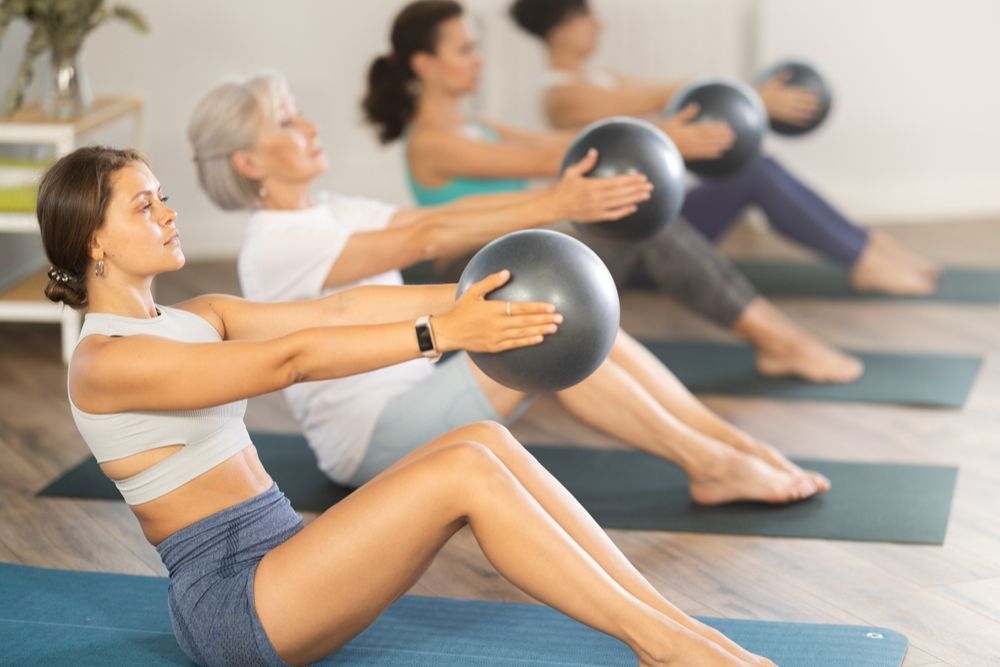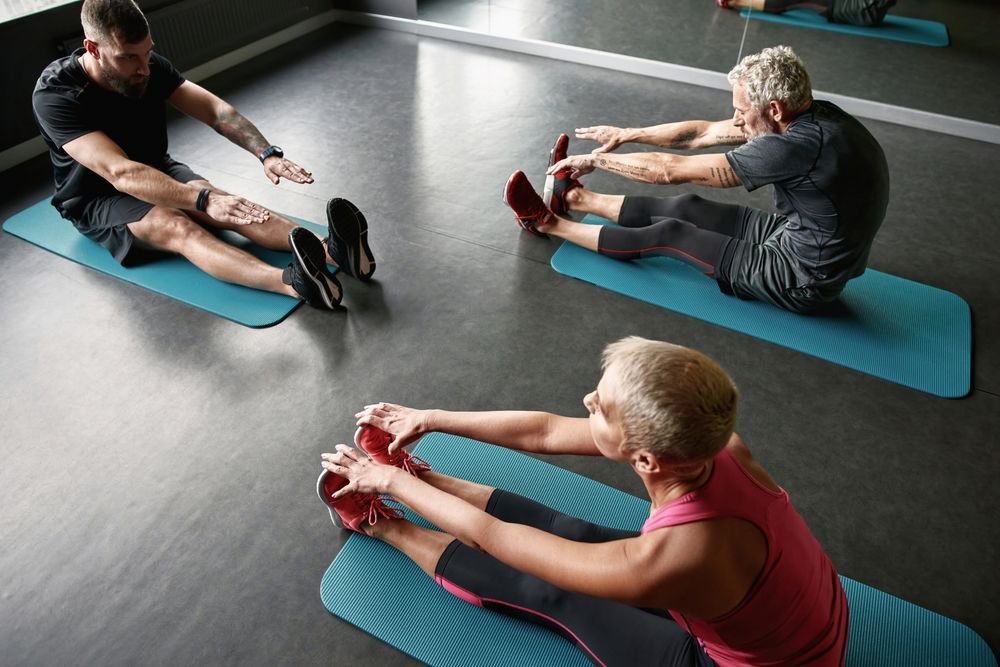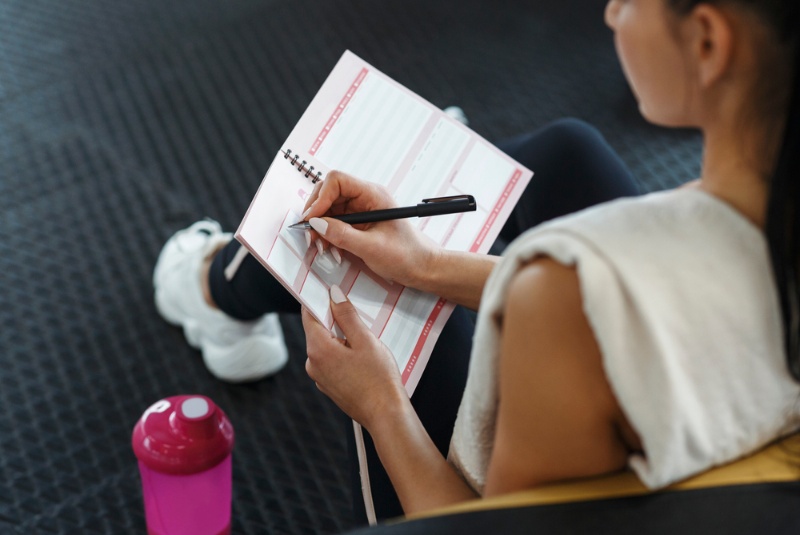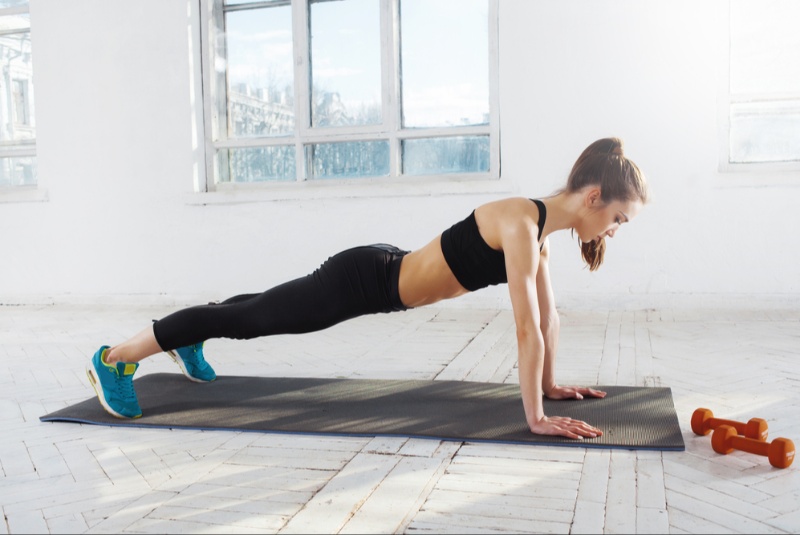Exercise is essential for maintaining a healthy lifestyle at any age, but as we grow older, our bodies change, and so do our fitness needs. Choosing the right type of exercise can help you stay active, strong, and healthy throughout life. Understanding what type of exercise is most beneficial for your age group can help you maximize the benefits and minimize the risk of injury. Here’s a guide to choosing the right type of exercise for different age groups.
Children and Teenagers (Ages 5–17)
Exercise Focus: Developing coordination, strength, and cardiovascular fitness
During childhood and adolescence, the focus should be on building a strong foundation of physical fitness through a variety of fun and engaging activities. Encouraging regular physical activity helps develop coordination, muscle strength, and cardiovascular health, while promoting long-term healthy habits.
Recommended types of exercise:
- Aerobic activities: Swimming, biking, running, dancing, and playing sports like soccer or basketball.
- Strength-building exercises: Bodyweight exercises like push-ups, sit-ups, and squats, or light resistance training with supervision.
- Flexibility and balance: Activities like gymnastics, martial arts, or yoga can help improve flexibility and coordination.
It’s important that physical activity remains fun and varied during these years. Avoid heavy weightlifting or overly intense exercise routines that could harm growing muscles and bones. The goal is to make exercise a positive experience and a natural part of daily life.
Young Adults (Ages 18–30)
Exercise Focus: Building strength, endurance, and agility
In your late teens and twenties, your body is at its peak in terms of muscle strength, flexibility, and endurance. This is the time to focus on building a well-rounded fitness routine that includes strength training, cardio, and flexibility. Engaging in a variety of exercises can help prevent injury and burnout while developing different aspects of fitness.
Recommended types of exercise:
- Strength training: Weightlifting or bodyweight exercises like squats, lunges, and bench presses to build and maintain muscle mass.
- High-intensity interval training (HIIT): Combines bursts of intense cardio with short rest periods, improving cardiovascular health and boosting metabolism.
- Cardio exercises: Running, cycling, swimming, and dancing to improve cardiovascular endurance.
- Flexibility training: Incorporating yoga or stretching into your routine helps maintain flexibility and prevent injury.
Young adults should aim to build muscle mass, increase endurance, and improve overall fitness levels. This is also a great time to explore new types of physical activity like rock climbing, team sports, or endurance challenges to keep workouts engaging and enjoyable.

Adults (Ages 31–50)
Exercise Focus: Maintaining muscle mass, cardiovascular health, and flexibility
As people enter their thirties and forties, maintaining muscle mass and bone density becomes increasingly important, especially as metabolism begins to slow down. Additionally, cardiovascular health and flexibility should remain key components of any fitness routine. A combination of resistance training, cardio, and flexibility exercises will keep you feeling strong, energized, and agile.
Recommended types of exercise:
- Strength training: Focus on full-body exercises like deadlifts, squats, and resistance bands to maintain and build muscle.
- Cardio workouts: Include moderate-intensity activities like brisk walking, cycling, or swimming to maintain heart health.
- Core and balance exercises: Pilates, yoga, and balance training help strengthen the core and improve stability, reducing the risk of injury.
- Stretching and mobility: Regular stretching or yoga to maintain flexibility and prevent stiffness.
In this age group, it’s crucial to prevent muscle loss and maintain joint health. It’s also a good idea to balance intense workouts with recovery activities like stretching or yoga to promote longevity in your fitness routine.
Older Adults (Ages 51–65)
Exercise Focus: Preserving muscle, improving balance, and enhancing mobility
As you reach your fifties and beyond, your focus should shift to preserving muscle mass, enhancing joint mobility, and improving balance. Strength training becomes even more important for preventing sarcopenia (age-related muscle loss), while exercises that improve balance and flexibility can help reduce the risk of falls.
Recommended types of exercise:
- Strength training: Light weights or bodyweight exercises like chair squats, light resistance training, or water-based exercises that are easier on the joints.
- Low-impact cardio: Walking, swimming, or cycling at a comfortable pace to maintain heart health without putting too much strain on the joints.
- Balance and stability exercises: Tai Chi, yoga, or balance-focused workouts to improve stability and coordination.
- Stretching and flexibility: Gentle stretching or yoga to maintain flexibility and ease stiffness in the joints.
Older adults should prioritize joint-friendly exercises and functional strength to maintain independence and reduce the risk of injury. Low-impact activities are ideal for avoiding excess strain on the body, while regular strength training can help retain muscle and bone strength.
Seniors (Ages 65+)
Exercise Focus: Enhancing mobility, balance, and maintaining muscle strength
For seniors, maintaining mobility, balance, and muscle strength is critical for living an independent, active life. Staying active can help reduce the risk of falls, maintain bone health, and improve mental well-being. The goal should be to stay as mobile and flexible as possible while incorporating safe strength and endurance training.
Recommended types of exercise:
- Balance exercises: Tai Chi, yoga, or standing balance exercises to reduce the risk of falls.
- Strength training: Light resistance training or exercises using resistance bands to maintain muscle mass and bone health.
- Low-impact cardio: Walking, swimming, or cycling to support cardiovascular health without putting too much strain on the joints.
- Stretching and flexibility: Gentle stretching, chair yoga, or water aerobics to improve flexibility and reduce stiffness.
At this stage, exercise should be safe, low-impact, and focused on maintaining functional movement. Strengthening muscles and improving balance are essential to help seniors maintain independence, while activities like walking and swimming keep the heart healthy and joints active.
Tips for All Ages
Regardless of age, there are a few universal tips that can help you get the most out of your fitness routine:
- Listen to your body: If you experience pain or discomfort, stop and assess what might be wrong. Injuries can take longer to heal as you age, so it’s important to exercise with care.
- Stay consistent: Regular physical activity is key to reaping the benefits. Aim for a balance of strength, cardio, and flexibility exercises each week.
- Warm up and cool down: Always warm up before exercise and cool down afterward to prevent injury and aid recovery.
- Consult a professional: If you’re unsure about what exercises are best for you, or if you have any health concerns, consult a fitness professional or your doctor before starting a new exercise regimen.
Choosing the right type of exercise for your age is crucial to staying healthy, active, and injury-free. Whether you’re a child developing coordination, a young adult building strength, or a senior focusing on balance, there’s an exercise routine for every stage of life. By understanding your body’s changing needs and adapting your workouts accordingly, you can enjoy the benefits of physical activity at any age.





